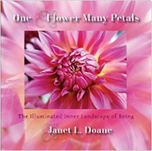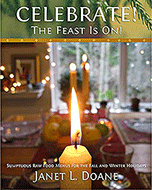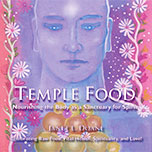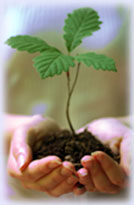 |
|

Creating foods that inspire me artistically is so much fun. This salad sings with gorgeous color, wonderful taste, and exciting textures. Celery, mung beans, red cabbage, goji berries, and jungle peanuts make for a delicious and hearty salad of beauty to serve anytime, for lunch or dinner.
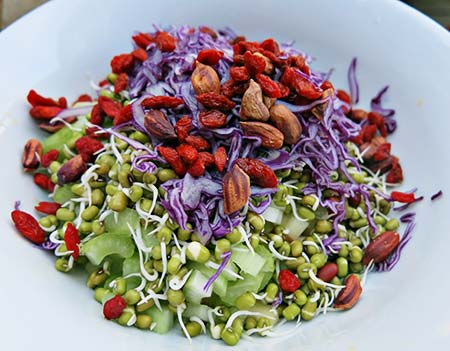 Ingredients: Serves 2
Ingredients: Serves 21 1/2 cup celery, finely sliced 1 cup mung bean sprouts 1/2 cup red cabbage, super finely sliced 4 tablespoons goji berries 4 tablespoons jungle peanuts 4 tablespoons green onions, finely sliced Optional ingredient: greens of your choice Directions I like to make salads in layers, so the colors are more visible and glow like a rainbow, so full of vibrant health. To assemble, and duplicate this look, start with the celery first, then mung beans, then red cabbage, then green onions, then goji berries, and last, the jungle peanuts. Serve with your favorite dressing, or fresh lemon juice, lime juice, or Balsamic vinegar, and a tiny drizzle of oil. Microgreens & Sprouting Update
Ann Wigmore, pioneer of wheatgrass therapy and founder of the Hippocrates Health Institute, wrote in her book, The Sprouting Book, this truly inspiring account of her travels to set up healing camps in India, and the power of sprouts and living foods.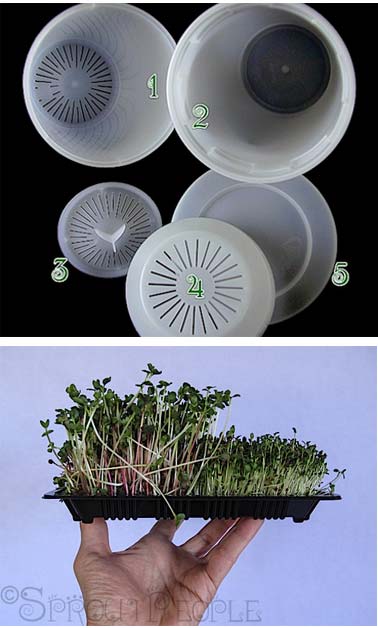 "In the past fifteen years I made several trips to the large cities of India, to set up healing camps with doctors and government administrators there. Hundreds of people with all sorts of problems—from heart disease and cancer to leprosy and malnutrition—were admitted to these camps. The patients stayed in the camp and ate sprouts, wheatgrass, and other living foods until they recovered. The recovery of starving children who were placed on a diet combining sprouts and fruits was truly amazing. In less than thirty days, their sores and scars disappeared, and abdominal swelling was in every case reduced to normal. Above all, these children became able to run and play, instead of having to be carried around by their mothers because they were unable to walk on their own."
"In the past fifteen years I made several trips to the large cities of India, to set up healing camps with doctors and government administrators there. Hundreds of people with all sorts of problems—from heart disease and cancer to leprosy and malnutrition—were admitted to these camps. The patients stayed in the camp and ate sprouts, wheatgrass, and other living foods until they recovered. The recovery of starving children who were placed on a diet combining sprouts and fruits was truly amazing. In less than thirty days, their sores and scars disappeared, and abdominal swelling was in every case reduced to normal. Above all, these children became able to run and play, instead of having to be carried around by their mothers because they were unable to walk on their own."Ann’s story has stayed with me for many years. And it motivates me to take more steps into the world of living food. We’ve made progress with our microgreen project. It took awhile to get everything we wanted, like non-soil growing medium, and some inexpensive compostable 4"x 7" trays to start growing microgreens in small batches. We wanted to get familiar with the process before tackling larger trays. We’ll be learning how much to plant and how much we’ll use, a process that takes time. We also bought several Easy Sprout sprouters that live up to their name—they are super easy to use, and can be stacked to take up less room in the kitchen, and are good for travelling. "The design came to the inventor Gene Monson in a dream, in the late 1970’s. He has spent his life since, spreading the word of Easy Sprout." It can grow all the leafy green sprouts, grains, legumes, nuts, and seeds. How wonderful that one man’s dream took root, grew, and is helping millions of people! (Photos of Easy Sprouter and microgreen tray, and quote are from the Sprout People website.) All these new tools have converged in the kitchen—which had to be reorganized—and our sprout farm is up and running once again! It’s important when beginning any new project to find out what works, what’s comfortable, because there’s always a learning curve. And that can feel a bit daunting until the new practice becomes familiar. It’s taken me weeks, months, to finally be ready. I did a lot of research, and then everything I learned finally settled into place and I knew what to do. Our first major goal is to make sprouts and microgreens 50% of our diet. The rest will be fruits, greens, veggies, seaweed, and some nuts and seeds that are soaked and sprouted to make cultured seed yoghurts and cheeses. Some final thoughts on the gifts of organic sprouts: when soil conditions are questionable, when a garden can’t be planted for lack of space or sunlight, when there’s little fresh food available, when finances are strapped (mung beans and lentils are so affordable), when food choices are poor—such as with GMO foods—or when high nutrition is an absolute necessity for healing, sprouts are, to me, the answer. Sprouts are like little god-sends—they’re humble, powerful, and hold potent, life rejuvenating and sustaining properties within their tiny seeds—and Rex and I are profoundly grateful that they have become a part of our lives.  |
|









